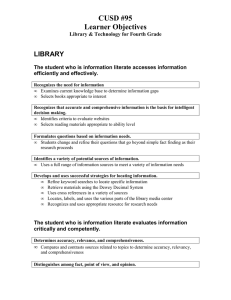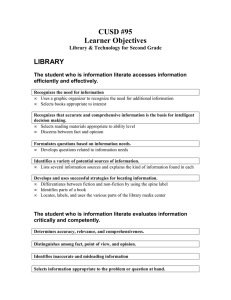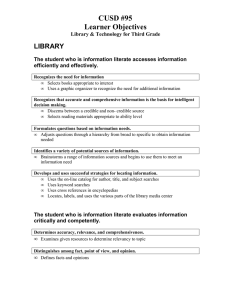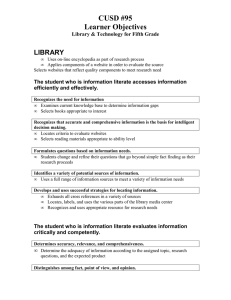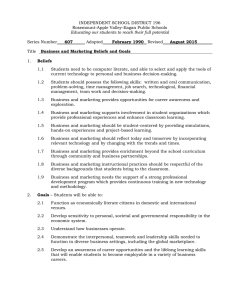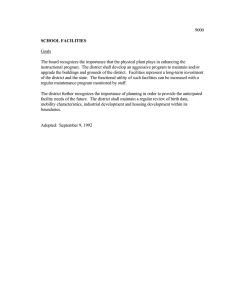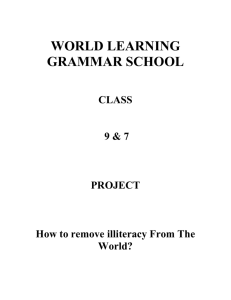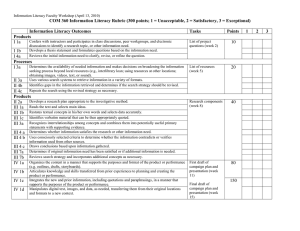CUSD #95 Learner Objectives LIBRARY
advertisement
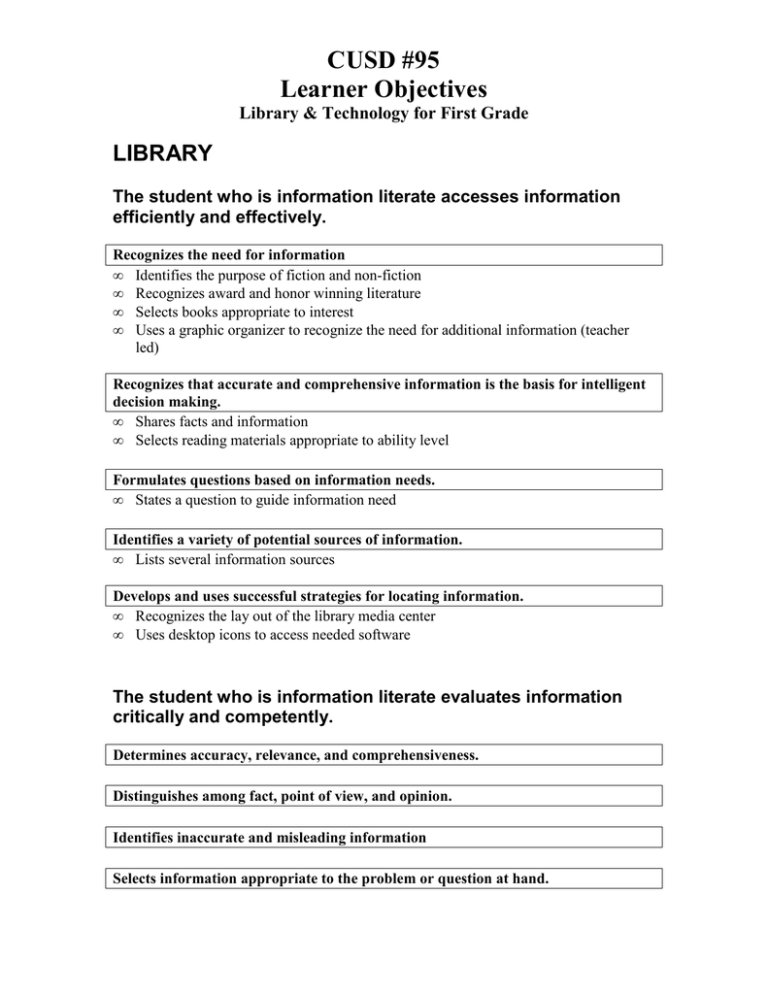
CUSD #95 Learner Objectives Library & Technology for First Grade LIBRARY The student who is information literate accesses information efficiently and effectively. Recognizes the need for information • Identifies the purpose of fiction and non-fiction • Recognizes award and honor winning literature • Selects books appropriate to interest • Uses a graphic organizer to recognize the need for additional information (teacher led) Recognizes that accurate and comprehensive information is the basis for intelligent decision making. • Shares facts and information • Selects reading materials appropriate to ability level Formulates questions based on information needs. • States a question to guide information need Identifies a variety of potential sources of information. • Lists several information sources Develops and uses successful strategies for locating information. • Recognizes the lay out of the library media center • Uses desktop icons to access needed software The student who is information literate evaluates information critically and competently. Determines accuracy, relevance, and comprehensiveness. Distinguishes among fact, point of view, and opinion. Identifies inaccurate and misleading information Selects information appropriate to the problem or question at hand. • Recognizes one to two facts in order to answer research question presented The student who is information literate uses information accurately and creatively. Uses information for practical application. • Organizes information in chronological order pictorially and/or verbally Integrates new information into one’s own knowledge. • Identifies one new fact from a non-fiction source Produces and communicates information and ideas in appropriate formats. • Recognizes a variety of formats to produce and communicate information The student who is an independent learner is information literate and pursues information related to personal interests. Seeks information related to various dimensions of well being such as career interests, community involvement, health matters, and recreational pursuits. • Asks for assistance in locating books that reflect personal interest The student who is an independent learner is information literate and appreciates literature and other creative expressions of information. Is a competent and self-motivated reader. Derives meaning from information presented creatively in a variety of formats. • Recognizes that information can be presented in a variety of formats The student who is an independent learner is information literate and strives for excellence in information seeking and knowledge generation. Assesses the quality of the process and products of personal information seeking. 2 Devises strategies for revising, improving, and updating self-generated knowledge. The student who contributes positively to the learning community and to society is information literate and recognizes the importance of information to a democratic society. Seeks information from diverse sources, contexts, disciplines, and cultures. Respects the principle of equitable access to information. • Understands and applies library book care rules The student who contributes positively to the learning community and to society is information literate and practices ethical behavior in regard to information and information technology. Respects the principles of intellectual freedom. Respects intellectual property rights. The student who contributes positively to the learning community and to society is information literate and participates effectively in groups to pursue and generate information. Shares knowledge and information with others. • Verbalizes a new fact in a small or large group setting Respects others’ ideas and backgrounds and acknowledges their contributions. • Uses appropriate listening skills while others are sharing information. Collaborate with others both in person and through technologies to identify information problems and to seek their solutions. • Uses appropriate technology to express ideas Collaborates with others both in person and through technologies to design and develop information products and solutions. 3 TECHNOLOGY Students demonstrate a sound understanding of the nature and operation of technology systems. • Demonstrates proper care and use of technology • Identifies basic parts of a computer • Demonstrates basic mouse usage • Demonstrates proper typing posture • Identifies and uses numbers and letters on the keyboard • Begins to use operational keys, such as space bar, return, backspace, etc. • Opens programs from the desktop • Identifies home row keys (1st grade) • Begins to demonstrate use of log on/log off procedure (1st grade) • Uses basic functions within a word processing program Students use technology tools to enhance learning, increase productivity, and promote creativity. • Utilizes software to reinforce concepts such as patterning, basic number concepts, classifying, sequencing, etc. • Types first name • Types an original sentence (1st grade) Students use a variety of media and formats to communicate information and ideas effectively. • Uses a drawing program to produce a finished product • Produces a pictorial graphic organizer • Produces a simple graphic organizer (1st grade) Students use technology to locate, evaluate, and collect information from a variety of sources. • Examines information using age appropriate on-line sources 4
